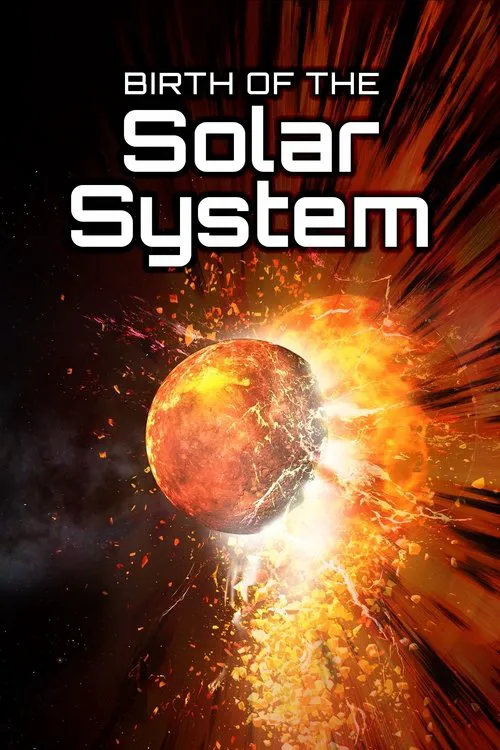Birth of the Solar System

Plot
The movie 'Birth of the Solar System' transports viewers to a time when the universe was still in its formative stages. The film opens with a vast cloud of gas and dust suspended in space, representing the raw material that would eventually give rise to our solar system. As the camera zooms in on this cosmic expanse, the viewer is struck by the sheer scale and majesty of the formation process. As the gas and dust begin to condense, gravity takes over, pulling the material in towards its center. This initial collapse marks the beginning of the planet formation process, where the laws of physics and chance come into play. The film vividly illustrates how various forces such as friction, gravity, and electromagnetic interactions shape the course of planetary development. One of the main protagonists in the film is a small, icy body hurtling through space. Known as Kaida, this tiny world represents a mere speck in the vast expanse of the solar system. Initially, Kaida's path appears to be one of random wandering, buffeted by the vicissitudes of a chaotic universe. However, as Kaida approaches the gravitational well of the growing sun, its trajectory begins to bend and change direction. As Kaida continues on its journey, it finds itself caught in the midst of a maelstrom of planet formation. Nearby, the gravitational pull of the burgeoning planets begins to exert its influence on Kaida, gradually pulling the tiny body towards its inevitable fate. Despite its small size, Kaida has become an unwitting participant in the grand dance of planetary formation. Meanwhile, the sun is growing in size and intensity, its gravitational pull growing stronger with every passing moment. The planets that are closest to the sun are slowly being coaxed into the searing inferno that awaits them. In a tragic turn of events, Kaida finds itself drawn inexorably towards the sun's fiery abyss. As Kaida approaches the sun's scorching surface, it must rely on its thin atmosphere to shield itself from the unforgiving heat. This precarious existence is but a brief moment in the grand scheme of things. In a heart-wrenching scene, Kaida's fragile defenses finally succumb to the sun's crushing gravity, resulting in a fiery demise that brings the planet's fate into stark relief. In stark contrast to Kaida's tragic fate, another smaller body, named Aisha, has managed to escape the sun's gravitational pull. Aisha's path takes a series of twisting and turning trajectories, often finding itself caught in the gravitational well of nearby planets. The tiny world narrowly escapes a catastrophic collision with a speeding asteroid, only to be drawn towards the gas giant Jupiter. Aisha's precarious existence is a testament to the unforgiving nature of the solar system. Despite its narrow escapes and close calls, Aisha has managed to avoid the sun's fiery abyss, but its long-term prospects remain precarious at best. As the film progresses, Aisha finds itself caught in a gravitational tug-of-war between Jupiter's massive gravitational pull and its own innate momentum. In a stunning display of celestial mechanics, Aisha narrowly avoids a catastrophic collision with Jupiter's massive moons. The planet dodges and weaves through a complex web of gravitational forces, slowly edging its way closer to the orbit of the sun. In a remarkable twist of fate, Aisha becomes an unwitting participant in the sun's entourage of planets, its future now bound to the ever-unpredictable dance of the solar system. As the film concludes, the viewer is left to ponder the grand tapestry of planetary formation. The birth of our solar system is revealed as a complex, dynamic, and often brutal process, where chance and gravity determine the fates of planets yet unknown. Through the eyes of Kaida and Aisha, the viewer gains a profound insight into the unforgiving yet majestic universe that has given rise to our own solar system. The cinematic masterpiece that is 'Birth of the Solar System' serves as a poignant reminder of the fragility and resilience of life in the cosmos. In a universe where gravity and luck hold sway, it is a testament to the enduring power of resilience and adaptability that any world could thrive, even in the face of such overwhelming odds. As the film fades to black, the viewer is left with a sense of awe, wonder, and a deeper appreciation for the unfathomable majesty of the universe that has given rise to our own planet, our solar system, and ultimately, ourselves.
Reviews




